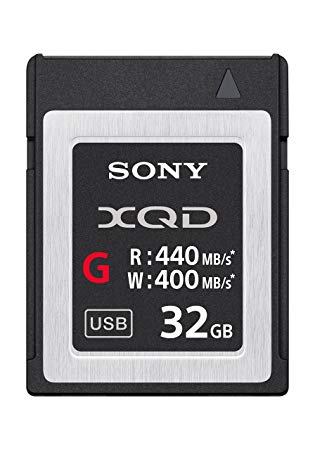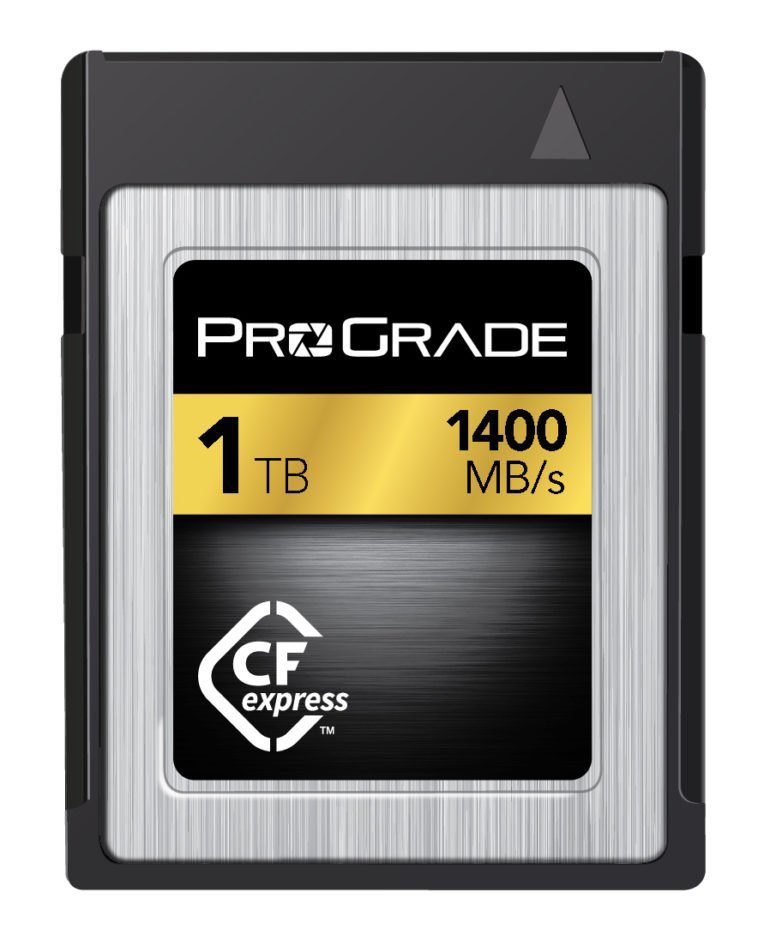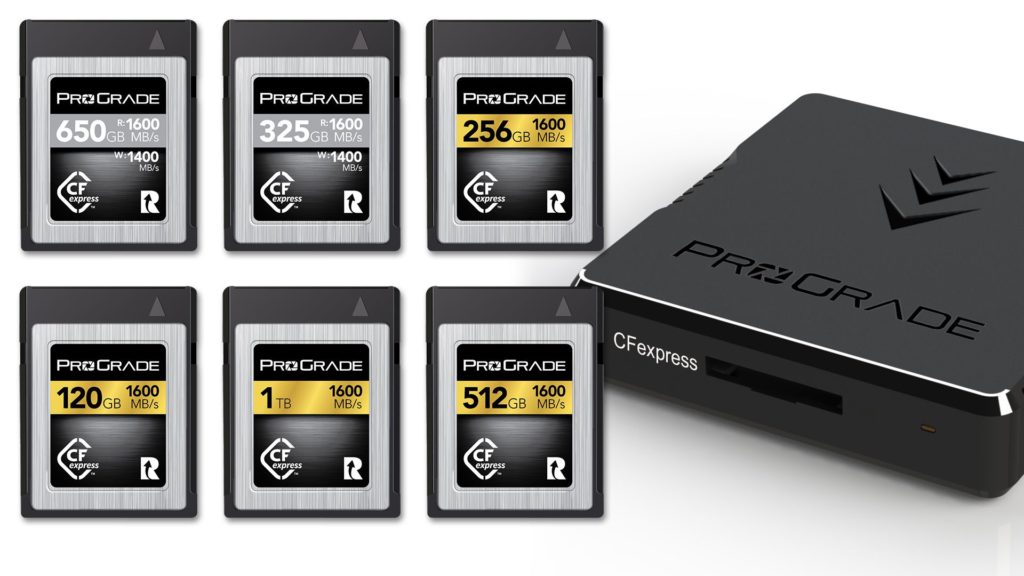The XQD card / format is based on the PCI Express (PCIe) architecture and should guarantee transfer rates in the order of 1 Gb/s to 4 Gb/S – the first cards came out in 2012 and were branded SONY. Although the original concept was based on development from Sony, Nikon and Sandisk, the CompactFlash Association were involved in the development. Despite this, current production of XQD cards seems to come exclusively from Sony, with the company creating licensing problems for other manufacturers, maintaining an articifially high price. A 32Gb XQD card costs 150€ in comparison to a 32Gb SDHC card which costs around 20€ – the transfer rates are not the same, but for most purposes the SDHX format suffices.
Having extremely fast transfer rates is not useful to everybody – as can be seen by the two examples below, the XQD is rated at 440MB/s while the CFExpress card is rated nearly 4 times faster. Assuming the internal camera software can handle the traffic, this would increase the burst rate for a camera, as it would be able to empty the buffer to the memory card that much faster, but I can’t think of any other advantages. For people filming video with modern digital cameras, the speed of the current SDHC cards seems perfectly sufficient, although 4K filming would need higher transfer speeds, I agree – 200 or 300 MB/s SDHC cards seem popular for this useage, so increasing to 1400 MB/s is possibly overkill here.


CFExpress is physically a similar format, which also uses the PCIe architecture, but from what the pundits are saying, based on the fact that there don’t seem to be any licensing problems, it should lead to cheaper cards.
The form factor of the cards is identical to XQD which will allow manufacturers using the XQD format to create firmwear modifications to be able to use the cards in camera bodies that currently use XQD cards.
In addition, the storage rates seem to be phenomenal – cards with up to 2Tb of storage have been ‘teased’ at the recent CP+ trade show in Japan.
Similar in size to the current SD cards, CFExpress seems to have a metal chasis which should create a physically robust memory card.
I can’t help thinking that Sony have shot themselves in the foot here – creating a licensing ‘problem’ which will ultimately push people to a more realistically priced medium. Nikon and Panasonic seem to be the only major manufacturers to have embraced the format – Nikon with the pro-grade cameras (D4 – D5, D850, D500 etc.) but also interestingly on the new mirrorless offerings (Z6 & 7) Nikon have also announced that a firmwear upgrade for CFExpress is in the works for these cameras, which is encouraging, and I wonder if it will eventually signal the end of XQD – who is going to buy a more expensive, less performant card when CFExpress is freely available?

A word about card capacity – as an example, I shoot an average of 600 24 MP images when I cover an hour-long performance. I have a 64Gb card in my camera and I have NEVER filled it up, or come even close. When I cover a festival, I will see, on average, three performances each night – and I will come home with nearly 1500 images. I shoot 14 bit lossless compressed RAW images which gives me about 1100 per 64Gb card. I will take my two other 32Gb cards with me and change for each performance – this makes it easier for me to sort out the files when I get back home.
Using this argument I could see myself buying a 120Gb card at 249€ or a 256 Gb at 667€ but frankly I think I’ll wait until CFExpress comes out! (I actually quite like eating…and being able to afford to do so…)
One last thing…the more you manage to cram onto a memory card, the more you risk to lose when the damn thing slips out of your bag without you noticing it…
